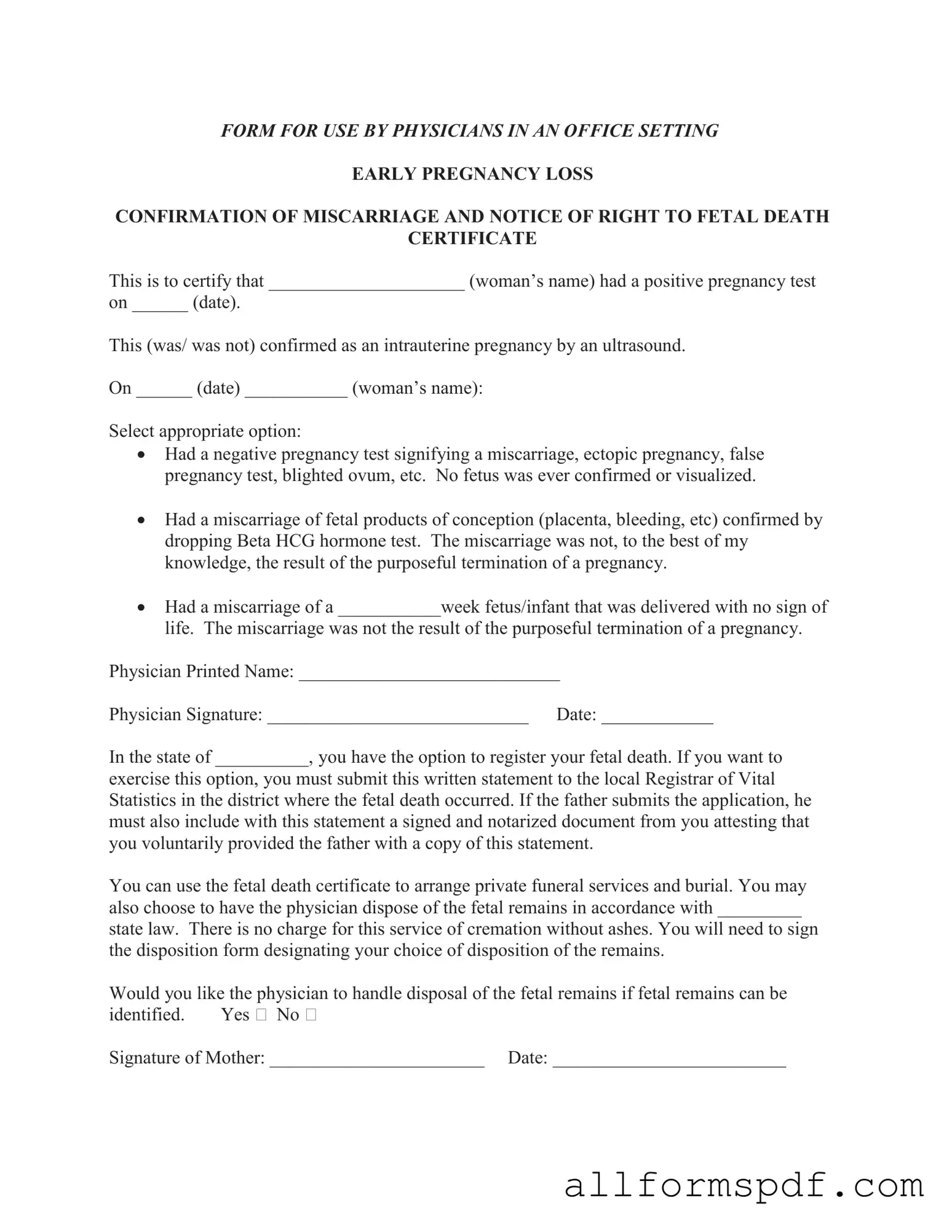Filling out the Miscarriage Discharge Paper form can be an emotional and challenging process. Many individuals make mistakes that can lead to confusion or delays in necessary procedures. Understanding these common pitfalls can help ensure that the form is completed accurately and respectfully.
One frequent mistake is failing to include the woman's name or date of the positive pregnancy test. This information is crucial for the form's validity. Omitting these details can lead to complications in the registration of fetal death or other necessary follow-ups. It is essential to double-check that all personal information is filled in completely.
Another error involves the selection of the appropriate option regarding the nature of the miscarriage. Many individuals may not fully understand the distinctions between a miscarriage, ectopic pregnancy, or a blighted ovum. Selecting the wrong option can lead to miscommunication with healthcare providers and may affect future care. Take the time to read each option carefully and choose the one that accurately reflects the situation.
In addition, some people neglect to have the physician’s printed name and signature included. This oversight can render the form invalid. The physician's confirmation is a vital part of the document, so it is important to ensure that these sections are completed before submitting the form.
Another common mistake is not being aware of the state-specific laws regarding fetal death registration. Each state has different requirements, and failing to follow these can complicate the registration process. Researching local regulations or asking the healthcare provider for guidance can help clarify these requirements.
Additionally, individuals may overlook the necessity of signing the disposition form. If the mother wishes to have the physician handle the disposal of fetal remains, this choice must be clearly indicated. Neglecting to sign this section can lead to uncertainty about what will happen to the remains, adding to the emotional burden during an already difficult time.
Some people may also forget to include the date of signing the form. This date is important for record-keeping and may be required for legal purposes. Without it, there may be questions about the timing of the miscarriage and subsequent procedures.
Lastly, individuals sometimes rush through the process, leading to incomplete or unclear responses. Taking the time to carefully read each section and ensure that all information is accurate can prevent unnecessary complications. It is essential to approach this process with care and compassion for oneself during such a sensitive time.
